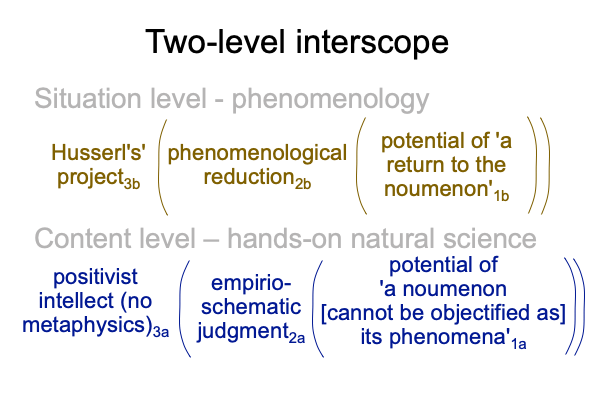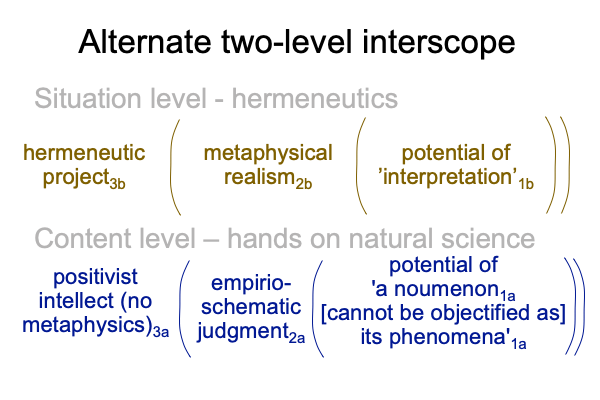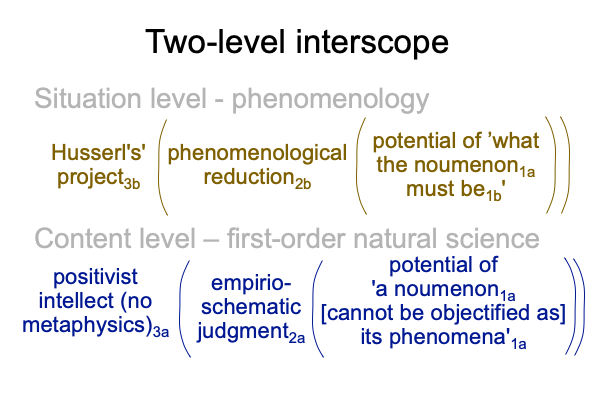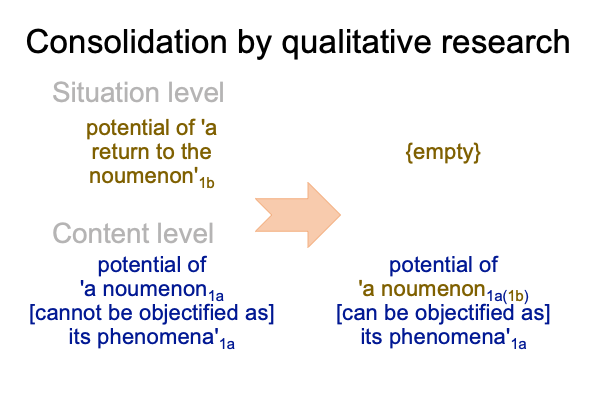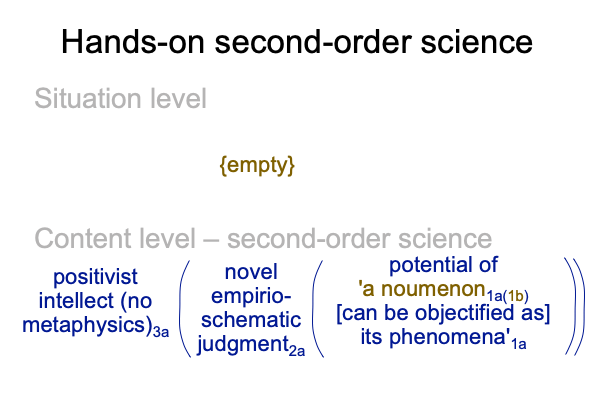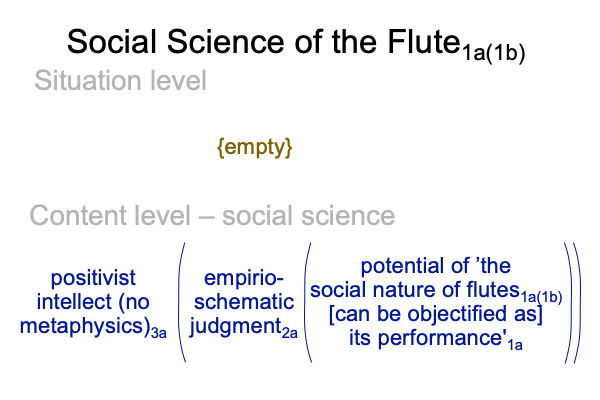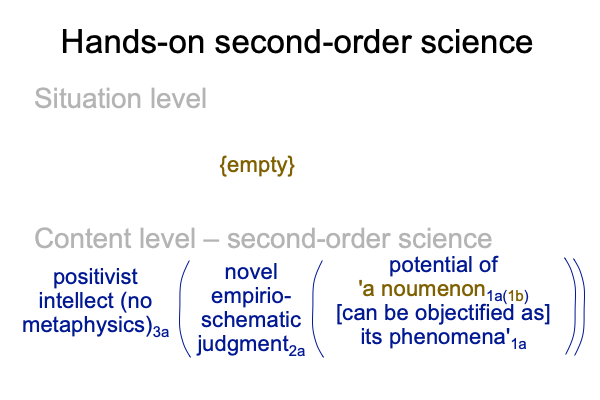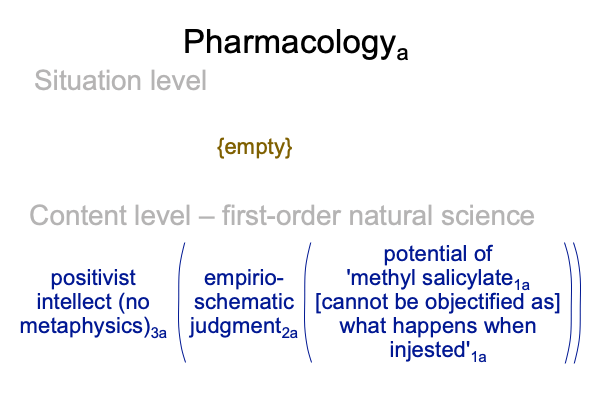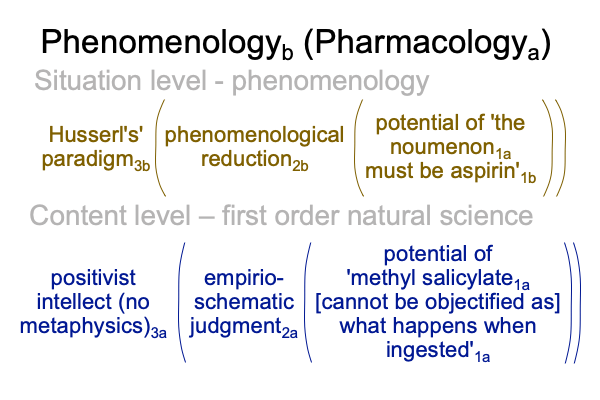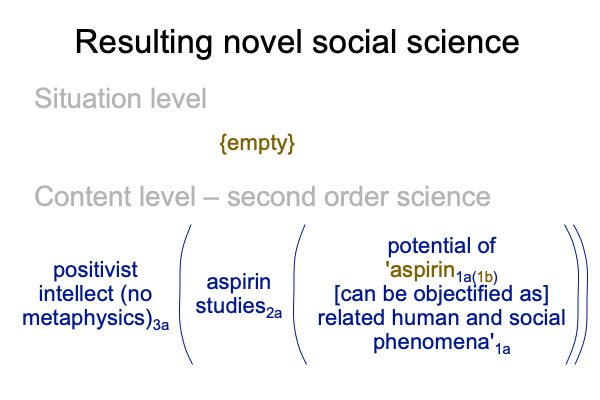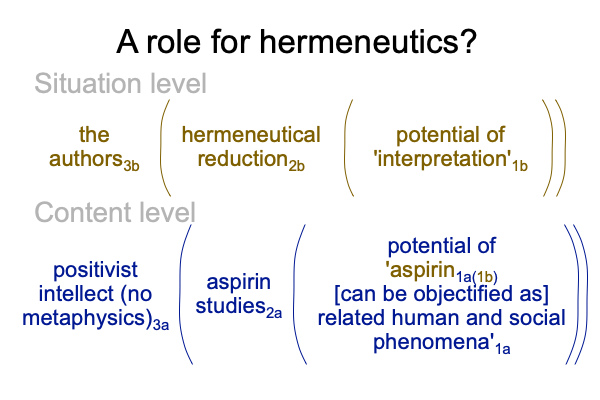Looking at John Perez Vargas, Johan Nieto Bravo and Juan Santamaria Rodriguez’s Essay (2020) “Hermeneutics and Phenomenology in… Social Sciences Research” (Part 5 of 18)
0015 Test two.
What is the latent dilemma between phenomenology and hermeneutics?
Both phenomenology and hermeneutics are able to situate the Positivist’s judgment. However, since the rule of the positivist intellect disallows metaphysics, only phenomenology is allowed to situate scientific discourse. Hermeneutics is programmatically excluded.
0016 How am I to diagram this answer?
First, the Positivist’s judgment unfolds into a content-level nested form, according to the categorical assignments of the elements. Here is a picture.
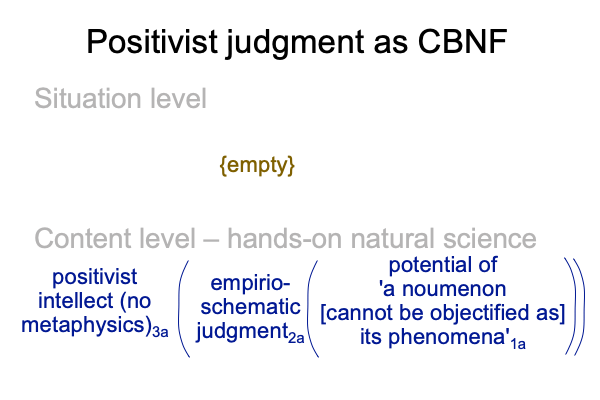
0017 According to Comments on Jack Reynolds’ Book (2018) “Phenomenology, Naturalism and Science”, another latent problem stands between science and phenomenology. Practicing scientists are perfectly happy to work within this content level, as the mechanical philosophers of the 17th century intend. Hands-on natural scientists3a build models2a of observations2a of phenomena1a. They take the noumenon1a for granted.
But, by the 20th century, visionary scientists lobby to situate the Positivist’s judgment with a glorified unfolding of the empirio-schematic judgment.
Edward Husserl (1859-1938) counters visionary scientists with phenomenology. Husserl’s project3b brings the actuality of phenomenological reduction2b into relation of the possibilities inherent in a return to the noumenon1b.
0018 Here is a diagram of the resulting two-level interscope. The situation-level nested form virtually situates (and emerges from) the content-level nested form.
